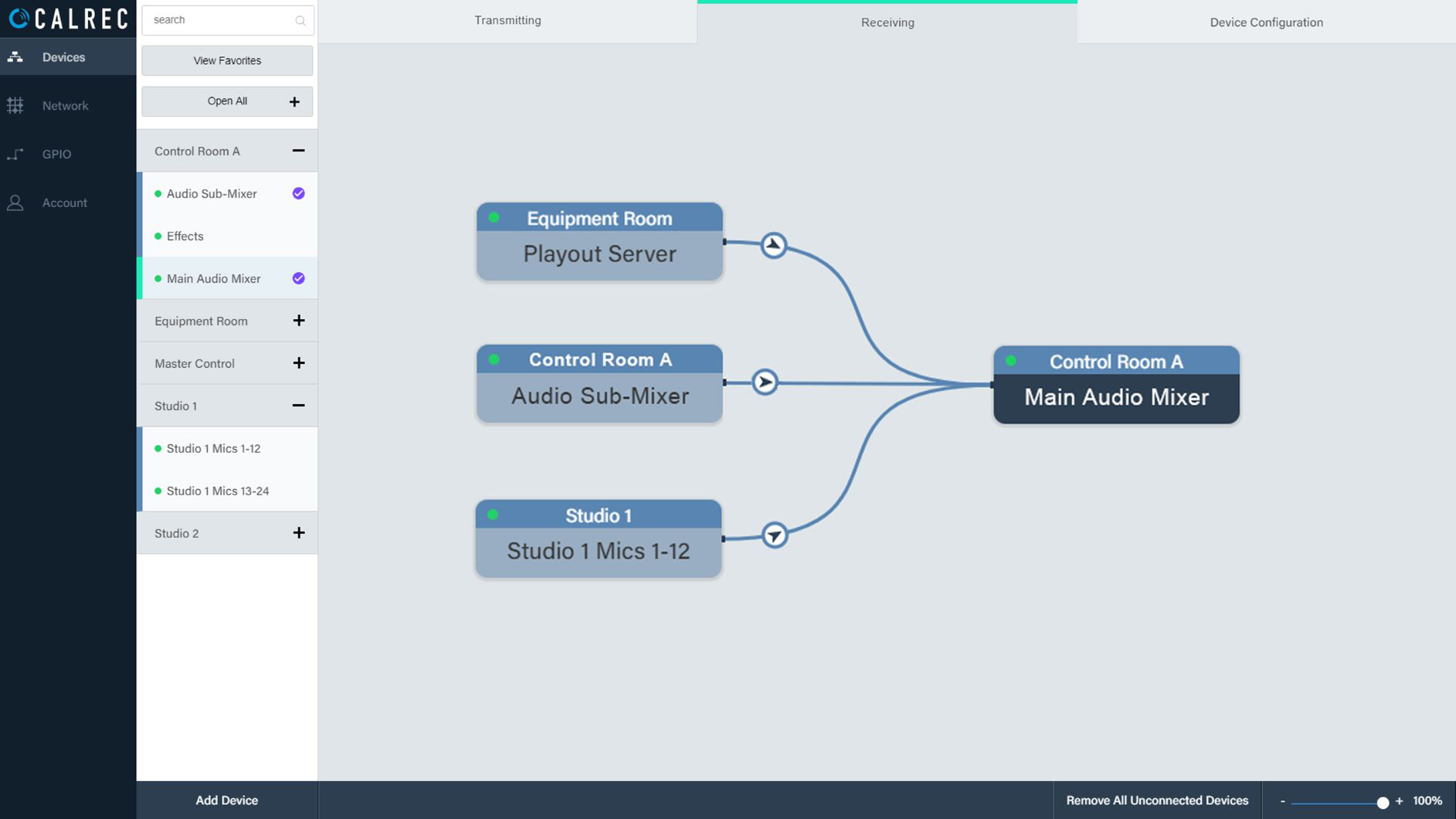
The Control Room and Studio Fall Out
There is a lot of interest in centralizing equipment rooms, to consolidate engineering and to free up space in broadcast facilities and trucks. ImPulse has been designed with COTS IP connectivity at the forefront, for both audio and control, so it is easy for it to be geographically remote.
Audio networking has already enabled a break of the traditional ties between control room and studio, providing redundancy and allowing control rooms to be utilized more efficiently.
This platform takes it a step further, breaking the ties between processing equipment and control rooms. When a mixer has completed one production, it can be redeployed to service a different production, from a different control room or even a different broadcast facility.
A versatile licensing model allows users to easily upgrade when they need to, and the allocation between mixers can be changed on a show-by-show basis to meet the needs of each production. Full hardware redundancy can be provided with redundant pairs, which can be geographically remote from each other, ensuring operation is maintained in the event of the most serious disaster.
The ability to freely deploy and reconfigure processing equipment between different production facilities means that down time is minimized and CAPEX is used as efficiently as possible. Regardless of whether the ImPulse core is local or remote, control is provided from Calrec’s Apollo and Artemis surfaces and existing surfaces can be upgraded.
The mixers can also operate as “headless” systems, with control provided by a web UI and/or from various production automation systems and third-party controllers.
Next Generation Connectivity and Routing
Audio connectivity is AES67 and ST-2110, with ST-2022-7 hitless packet merging. Routing capacity is scalable from 4,096×4,096 up to 16,384×16,384 channels. As well as routing to/from mixer DSP, it can be used for re-routing of streams and channel shuffling. NMOS connection management will provide seamless interoperability as IS-04/05 uptake increases among vendors. ImPulse also supports a wide array of protocols for connectivity to make it as interoperable as possible with 3rd party devices. Calrec’s “Connect” application makes stream management simple, providing familiar workflows for operational users and in-depth configuration/diagnostics for engineers, with a network wide view of both Calrec and 3rd party devices. Moving to IP should not make existing investments redundant and upgrade options allow for flexible migration.
Calrec Audio H2 IP gateway
New I/O controller cards that can operate in either Hydra2 or AoIP mode are available and can be retro-fitted into existing Hydra2 I/O boxes. Additionally, the new H2-IP-Gateway product bridges the Hydra2 and AoIP worlds, passing audio labels along with controls such as mic gain in both directions, allowing users to access and control audio from a Hydra2 network and vice-versa.
In summary, the ImPulse core is a brand-new, powerful and flexible audio processing platform with a flexible upgrade path. It provides immersive path widths with height and 3D panning, comprehensive and configurable up/downmixing between path widths, and native audio-over-IP connectivity. Designed for use in the cloud, and the world of virtualized audio processing, but equally capable in a studio complex or broadcast truck. It provides a cost-effective and hugely scalable audio processing and routing platform for the next generation.


